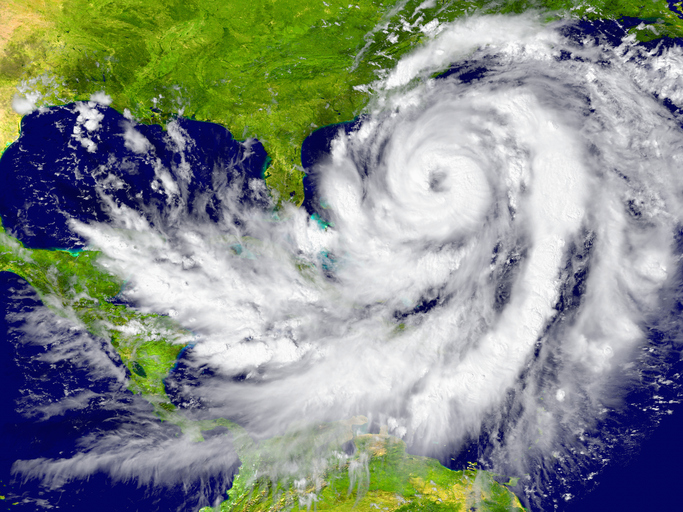On a recent return trip, as my plane descended into the New Orleans airport, I saw countless homes with blue tarps covering their roofs, nine months after Hurricane Ida wreaked havoc from Louisiana's bayou region to New York. People are preparing for another season as they rebuild from the previous ones.
Ida, like Hurricanes Laura, Delta, and Zeta, intensified quickly before making landfall, fueled by the warm waters of the Gulf of Mexico. Many people believe that climate change is making hurricanes stronger, which is especially dangerous for communities in their path.
So, how can we get ready?
Growing up in Louisiana, we always prepared for storm season by getting an emergency kit, planning evacuation routes, and closely following updates from meteorologists and emergency preparedness officials.
Similarly, governments must devise strategies for dealing with the numerous flood threats that communities along coasts and watersheds face, such as stronger hurricanes, sea-level rise, and extreme rainfall.
Following Hurricanes Katrina and Rita, Louisiana created a science-based, all-encompassing Coastal Master Plan to protect communities, cultural, economic, and environmental resources from coastal flooding. The plan, which is updated every six years with new science, takes into account a variety of scenarios over a 50-year period.
As a result, Louisiana has secured more than $21 billion for large-scale coastal restoration and protection projects that will reduce damage from previous storms and better prepare the region for future ones. Over the next year, Louisiana will invest an unprecedented $1.3 billion in coastal projects, with more than 114 projects moving forward.
Similar plans have recently been developed in Florida, New Jersey, and Virginia. Given images of homes lost to the sea filling our newsfeeds and a recent NOAA report predicting seas will rise a foot by 2050, doing so should be a requirement for any coastal state.
It should be done at the federal level as well. A comprehensive plan for addressing the nation's flood crisis, led by a newly created federal chief resilience officer, would marshal a whole-of-government approach to implement holistic, near- and long-term solutions to protect communities.
The plan should begin with a federal flood disclosure mandate, so that homeowners and renters understand their flood risk today and in the future, and can take appropriate mitigation measures.
It should prioritize natural solutions like oyster reefs, restored wetlands, and barrier islands, which provide a critical buffer from storms and sea-level rise and, according to one recent study, $450 billion in protection and 4,600 lives saved each year. Natural solutions, as opposed to seawalls and levees, are less expensive and provide additional benefits ranging from wildlife habitat to improved quality of life.
The plan should also acknowledge that hurricanes, flooding, and other natural disasters do not affect everyone equally. Hurricanes, from Katrina to Ida, have a disproportionate impact on under-resourced communities, making recovery more difficult.
When a disaster strikes, government leaders must mobilize recovery funding as soon as possible so that communities do not have to wait years to rebuild and can be more protected and resilient in the future.
The federal government must direct resources to communities that are most vulnerable and in need, such as those served by FEMA's Building Resilient Infrastructure and Communities program. It should also consider how flooding affects every aspect of our lives, from our homes to our jobs to our mental health, and ensure that solutions are tailored to these needs. Most importantly, government leaders should work with and within communities to find solutions, rather than in some distant capitol or agency office.
Aside from hurricanes, few parts of the country are immune to the effects of climate change. Lessons learned from a national coastal resilience plan can be applied to disasters ranging from wildfires to droughts by a federal chief resilience officer.
While we cannot prevent storms from occurring, we can take proactive measures to save lives and reduce their impact. To avoid worsening predictions of stronger hurricanes, sea-level rise, and extreme weather, we must work aggressively to reduce emissions.
Furthermore, the Infrastructure Investment and Jobs Act provides governments with an unprecedented opportunity to invest in a more climate resilient future. These investments make financial sense because every dollar invested prior to a disaster can save $6 in disaster recovery costs.
I sincerely hope that people are spared during this hurricane season, but hope is insufficient. We need bold action at all levels of government to understand risks and collaborate with people in vulnerable areas to reduce them before the storms arrive.













